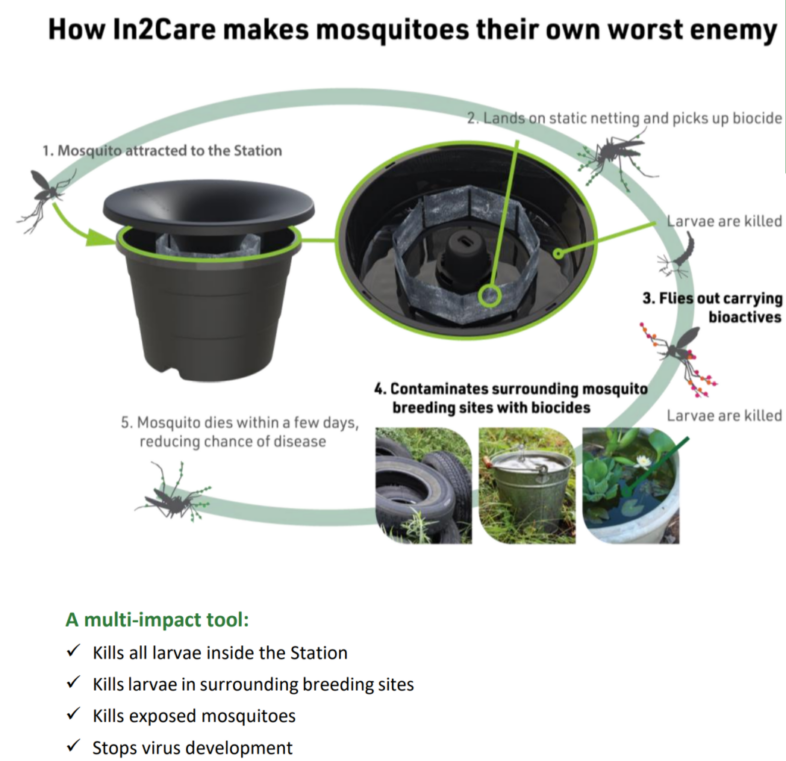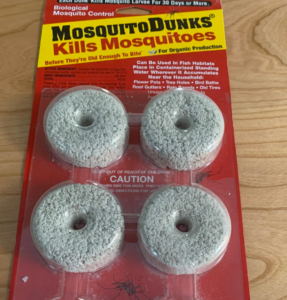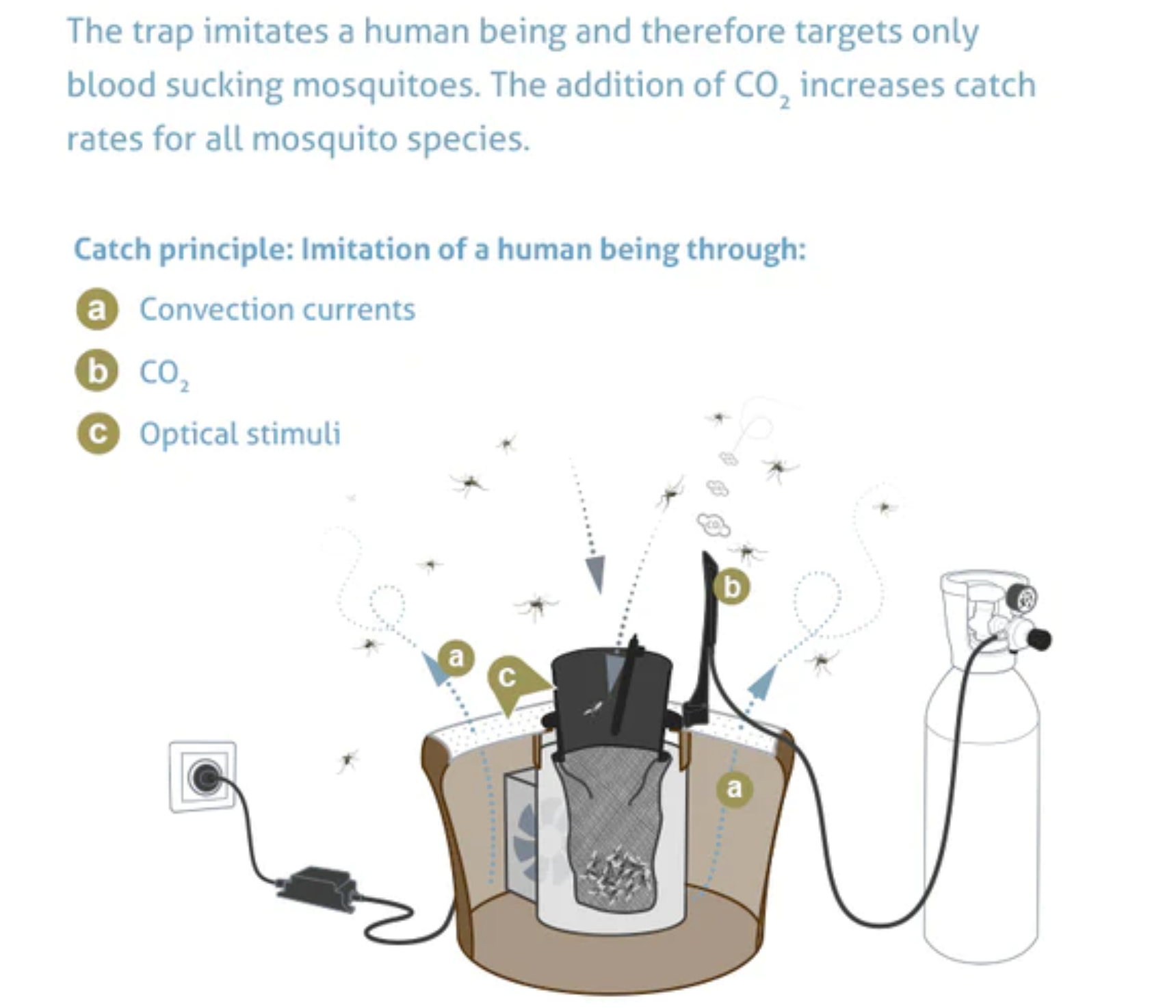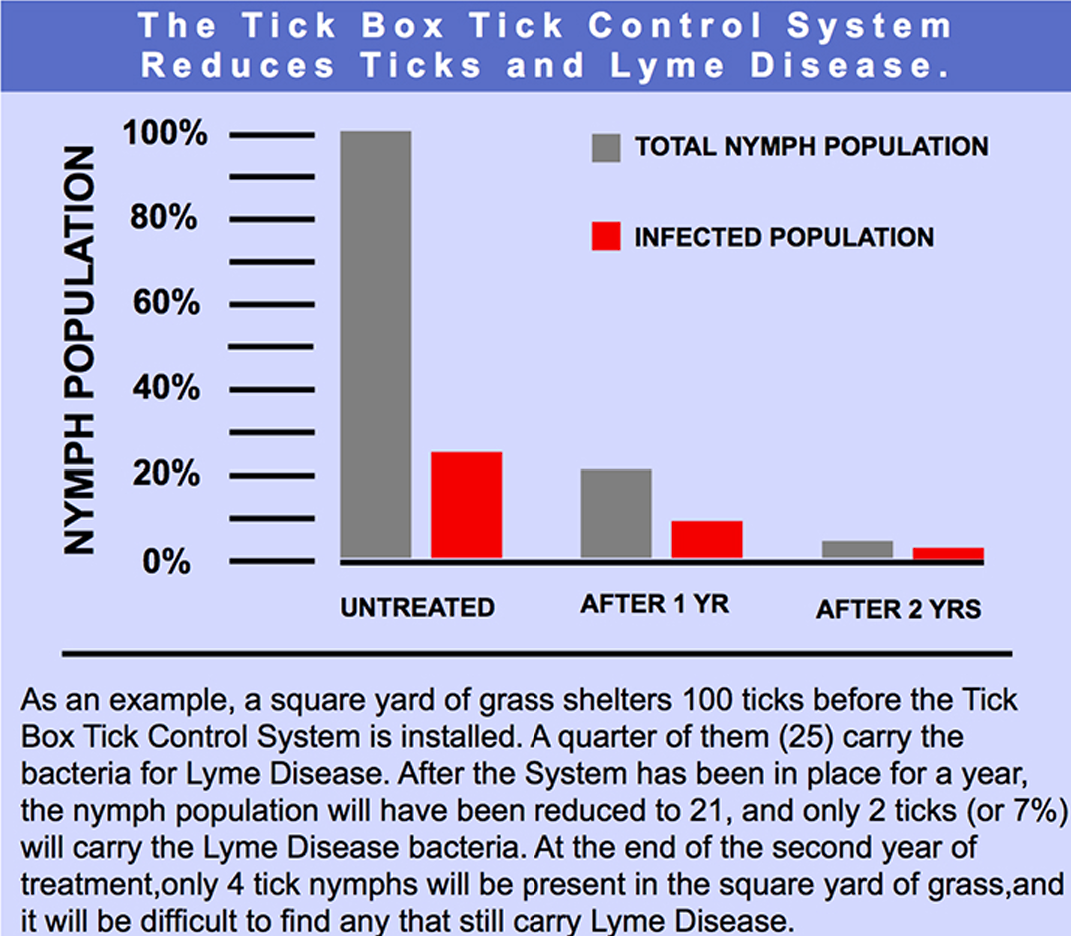Mosquito Control: In2Care Baiting Stations
The In2Care baiting stations form the backbone of our mosquito control services. For long term control, they are the most effective. For this treatment we will need access to an outdoor water spigot.
-
The standing water, yeast tablets, and bucket color attract female mosquitos to the Station
-
The only place the mosquito can land is on the mesh, which is coated by the powder of active ingredients: Pyriproxyfen (larvicide) and Beauveria Bassiana (adulticide). Pyriproxyfen is used by the WHO in drinking water. Beauveria Bassiana is a naturally occurring soil fungus that does not impact animals at all. The static charge ensures the mosquito is coated in the active ingredients. The eggs laid in the Station are killed by the larvicide.
-
The mosquito flies away in search of more breeding sites, with the active ingredients still attached.
-
As the mosquito lays more eggs, she contaminates those breeding sites, killing her eggs as well as those of any other mosquito that laid them there. This includes breeding sites outside of your yard, sites that are hard to reach, and sites you may not know about.
-
After a few days, the female mosquito is killed by the fungus spores, and she is not able to bite again.
Source Reduction and Larviciding
Source reduction is simple -- removing standing water that mosquitos can use to breed in your yard. It can be quite difficult for most people to correctly identify all of the places mosquitos breed in their yard, which is where our expertise comes in. What we can't fully eliminate, which is always the first priority, we will seek to larvicide instead to ensure that mosquitos cannot breed there. For this, we only use larvicides that are natural, biological controls and safe for people and other organisms.
BTI (Bacillus thuringiensis subsp. israelensis) is a bacteria that specifically targets mosquito and fungus gnat larva. BTI is applied to standing water or containers that are likely to fill with water in the form of mosquito dunks or mosquito bits. Eggs that are laid in that water are able to hatch, but as the larva grow they ingest toxins produced by the BTI that prevent the larva from pupating. BTI can be used in organic farming and is very safe for humans and beneficial insects. This treatment would typically be used in addition to the baiting stations.
Bacillus sphaericus is a closely related bacteria that also targets mosquito larva. We use it in combination with BTI-based products in a granular format. It is longer-acting than BTI, but unlike BTI, can be susceptible to resistance developing. Combining it with BTI gives you the benefits of longer term larval control without having to worry about resistance.
Mosquito Control: Event Treatments
While the baiting stations and larvicides target mosquitos at the larval stage and the gravid (egg laying) stage, the Mosquitaire device targets female mosquitos that are in search of a blood meal. Female mosquitos need a blood meal in order to lay eggs. After they are done laying eggs, they come back to bite again.
This device imitates what a human looks like to a mosquito, and then sucks the mosquitos into a collection bag. They are weak fliers and cannot escape. While this particular device may do nothing about egg laying mosquitos or larva, it does a great job of attracting and removing biting female mosquitos.
The Mosquitaire is deployed 4 days before your event as the main event treatment, but there are two optional add-ons. One is a larvicide treatment. This helps because mosquitos that are larva 4 days prior to your event can become biting mosquitos by the time of your event. The second is the "Sweet Scent" add-on to the Mosquitaire device. It is basically a scent packet meant to imitate the smell of a human and will make the Mosquitaire more effective. For this treatment we will need access to an outdoor outlet.
For Tick Control, we rely on the Tick Box TCS system. It is 4X more effective than "tick tubes", which were found to only reduce ticks by about 20%. This system involves deploying tick bait boxes around the perimeter of your yard.
These boxes actually attract small mammals like the white-footed mouse (not the same as a house mouse) and the eastern chipmunk, which serve as hosts for larval and nymphal ticks. The stations treat these small mammals with fipronil, the same ingredient found in topical dog flea-and-tick treatments. Each box contains less than 20% of the amount of fipronil in one flea and tick treatment for a medium sized dog.
By "flea-and-ticking" mice and chipmunks that are already in your yard, ticks are killed off before they are able to acquire disease, and before they reach life stages where they would typically use a human as a host. The bait boxes are too small for larger mammals to access, such as rats, cats, dogs, or children.




